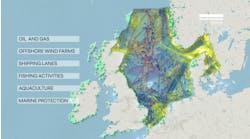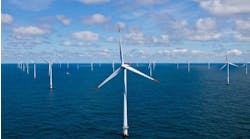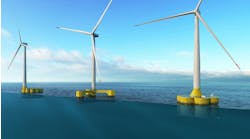This latest oil and gas industry downturn has essentially erased the upstream spending recovery from the prior downturn and will likely accelerate the transition to a low-carbon energy industry. Despite COVID-induced disruptions, the energy transition will continue to gain momentum and the oil and gas industry is embracing it, albeit at a measured pace. For now, it is primarily the major international operators with strong balance sheets that are rolling out long-term decarbonization plans.
A growing number of oil and gas companies, led by the European majors, have set targets to reduce carbon emissions from their operations and products. Measures to reduce emissions from oil and gas operations include carbon capture and storage, replacing gas turbine generators on platforms and rigs with power from renewable resources, and reducing or eliminating flaring from production operations.
Diversifying the mix of energy investments is another important measure of reducing the carbon footprint. Oil companies have been increasing investments in renewable energy from resources such as wind, solar, waves, and tides, as well as in hydrogen and biofuels. While demand for oil should eventually bounce back to pre-COVID levels and remain strong for decades to come, renewables are the fastest growing source of energy. Renewable power is widely considered to be the cornerstone of decarbonization, as power generation produces a quarter of all global carbon emissions. Moreover, investments in electricity can provide a stable and predictable return and are not subjected to the cycles that are common in oil and gas.
One of the fastest growing sources of renewable energy is wind, and offshore projects are an increasingly attractive investment as the levelized cost continues to decline. There was a record in new offshore wind capacity installed in 2019, and the market is expected to grow from 29 GW in 2019 to about 230 GW in 2030 and 550 GW in 2040, led by projects in Europe and Asia. Select offshore operators, namely Equinor and Shell, are capitalizing on this trend by leveraging the skills, technologies, and resources that are transferrable from oil and gas development to wind development. An in-depth review of operator efforts to diversify into renewable energy, plus the latest on carbon capture and storage and measures to decarbonize drilling rigs and support vessels, begins on page 20.




